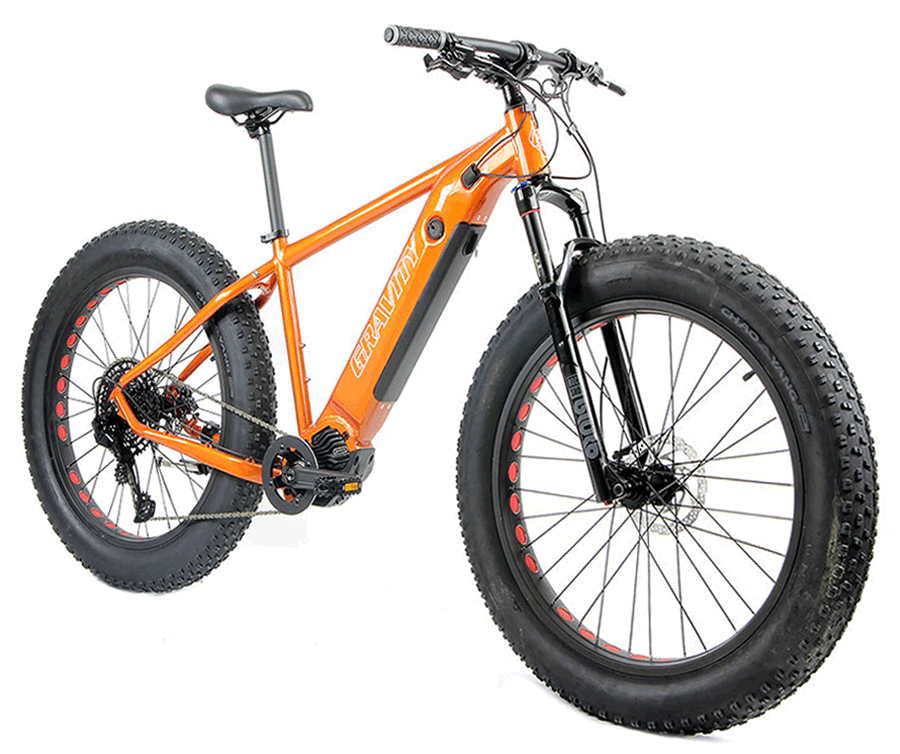It started with a wrong turn.
Somewhere deep in the Utah desert, Matt found himself far off the trail he’d been following. His GPS was glitching. His mountain bike tires struggled in the deep sand, spinning uselessly with every pedal stroke. Just when frustration peaked, he spotted another rider carving a smooth line over the dunes — grinning, balanced, and unstoppable. The difference? A fat bike.
That moment flipped a switch. Suddenly, the path less traveled wasn’t a problem — it was an invitation.
In recent years, fat bikes have shifted from niche novelties to serious adventure machines. Designed with oversized tires, ultra-wide rims, and low tire pressure, they thrive where traditional bikes falter. Whether it’s plowing through powder, floating over sandy beaches, or navigating rocky fire roads, fat bikes have unlocked a new dimension of cycling for weekend warriors and seasoned adventurers alike.
Let’s explore how fat bikes are changing the game for backcountry biking, and why this off-the-grid revolution might be your next great ride.
What Makes Fat Bikes Different?
A fat bike is, quite literally, a bicycle with fat tires — typically 3.8 inches or wider. This extra girth gives them unparalleled flotation over soft and unstable surfaces. Pair that with a robust frame, wide forks, and the ability to ride at extremely low tire pressures (as low as 5 PSI), and you’ve got a machine that can tackle terrain that would leave a road bike spinning in place.
These bikes were originally designed for snowy trails in Alaska, but their utility has expanded far beyond frozen landscapes. Today, they’re go-anywhere machines for riders who value exploration over speed — and who crave trails where footprints outnumber tire tracks.
Floating Through Snow Like It’s Summer
Snow is the great equalizer in biking. It slows down even the strongest rider and can derail a day’s adventure if your equipment isn’t up for it.
Enter the fat bike.
With its massive tires and enhanced grip, a fat bike can glide across groomed snow trails, packed powder, or even untouched fields with a surprising degree of control. Unlike a typical gravel bike, which might sink or lose traction, a fat bike’s surface contact and flexibility keep you upright and rolling forward.
In places like Colorado, Michigan, and the Pacific Northwest, winter fat biking is more than a novelty — it’s a full-blown sport. And best of all, you don’t need a ski pass.
Owning the Sand: Beach Riding Reimagined
If you’ve ever tried riding a bike on loose sand, you know it’s like pedaling in molasses. Regular tires sink, spin, and stall. But swap in a fat bike, and suddenly, the beach becomes your playground.
Fat bikes thrive in coastal environments. From California to Cape Cod, riders are exploring sandy stretches that once required hiking boots or ATVs. The wider tires distribute weight across a broader area, preventing sinking and maintaining momentum over dunes and soft terrain.
And unlike a traditional beach cruiser, which is designed for boardwalks and paved paths, a fat bike can transition from sand to trail without skipping a beat. Imagine starting your ride on a beach at sunrise and climbing a bluff trail by noon — no bike swap needed.
Technical Terrain: Trail Confidence on Steroids
Backcountry trails often present a mix of challenges — roots, rocks, mud, steep grades, and loose soil. Where a hybrid bike or gravel bike might falter, a fat bike powers forward. Its plush tires act as built-in suspension, absorbing shocks and giving the rider more control over unpredictable terrain.
That doesn’t mean fat bikes replace mountain bikes entirely. Rather, they complement them. Think of it this way: if a mountain bike is your trail scalpel, a fat bike is your off-road sledgehammer. For exploratory rides or multi-surface adventures where conditions are unknown, fat bikes are unmatched in their versatility.
Plus, they’re confidence boosters. Beginners often find fat bikes more stable, forgiving, and fun — especially when descending rocky trails or maneuvering over roots.
Beyond the Trail: Adventure Without Limits
One of the most compelling aspects of fat biking is how it redefines what’s “rideable.” Fat bikes open access to places that were once inaccessible by bicycle. Sandy deserts, snow-covered forests, frozen lakes, marshes, and even tundra — it’s all fair game.
More cyclists are embracing this freedom and planning fat bikepacking trips into the wilderness. With frame bags, panniers, and a GPS tracker, it’s now possible to disappear into the backcountry for days, carrying everything you need on two oversized wheels.
Fat biking invites a deeper connection to nature. It encourages riders to slow down, take in the scenery, and explore without boundaries. It’s about the journey, not the Strava segment.
Not Just for the Hardcore
One misconception is that fat bikes are only for hardcore adventurers. But, modern models have evolved into accessible options for all types of riders. Brands are now producing lighter frames, more efficient drive trains, and affordable models perfect for entry-level exploration.
Whether you’re a weekend trail rider or someone who’s only ridden a hybrid bike around town, a fat bike might be your gateway to adventure. The learning curve is gentle. The payoff? Massive.

Best of all, fat bikes are surprisingly versatile. While not as fast as a road bike on pavement, they can hold their own on local trails, forest roads, and urban snow routes. They’re also ideal for families who want to keep riding year-round — no matter the weather.
Where to Start Your Fat Bike Journey
If your spirit of adventure is calling, it might be time to browse the wide selection of fat bike at Bikesdirect.com. With unbeatable prices and a variety of models, from beginner-friendly to pro-level setups, it’s a great place to find your next off-grid companion.
Don’t let terrain dictate your ride. Let your bike rise to the challenge. Discover your ride-ready adventure machine today. Explore the selection of fat bikes, beach cruisers, gravel bikes, and more at Bikesdirect.com — and start riding where others stop.

